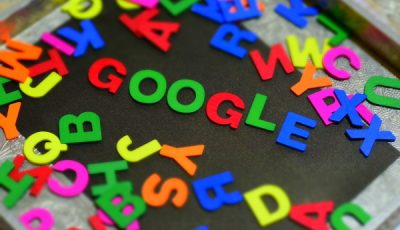Embedded Tweets Can Violate Copyright, Court Rules
 NEW YORK – In a ruling issued late last week which has drawn a strong negative response from some attorneys and other commentators observing the case, U.S. District Judge Katherine B. Forrest found that an embedded tweet in a news story can be construed as violating a photographer’s exclusive right to display his photo under §106(5) of the Copyright Act.
NEW YORK – In a ruling issued late last week which has drawn a strong negative response from some attorneys and other commentators observing the case, U.S. District Judge Katherine B. Forrest found that an embedded tweet in a news story can be construed as violating a photographer’s exclusive right to display his photo under §106(5) of the Copyright Act.
The case began when photographer Justin Goldman posted a Snapchat Story photo of New England Patriots quarterback Tom Brady walking alongside Danny Ainge, the General Manager of the Boston Celtics. Several readers who saw Goldman’s post then tweeted out the photo, and their tweets subsequently were embedded in online articles from Breitbart, the Boston Globe, Time and numerous other media outlets.
With the agreement of the parties, Forrest split the case into two phases. First, Forrest would consider whether the embedded tweets violated Goldman’s exclusive right to display his work, and in the second phase, the court would hear all the other issues in the case and arguments as to why the defendants should not be held liable, including various fair use defenses. Forrest’s ruling issued last week pertains solely to the exclusive display right and denies the defense motion for partial summary judgment on that question.
“Having carefully considered the embedding issue, this Court concludes… that when defendants caused the embedded Tweets to appear on their websites, their actions violated plaintiff’s exclusive display right,” Forrest wrote, summarizing her conclusions. “The fact that the image was hosted on a server owned and operated by an unrelated third party (Twitter) does not shield them from this result.”
The defendants, relying on the “Server Test” established in Perfect 10 v. Amazon, argued they had not violated Goldman’s exclusive display right, because the scope of the definition of “display” should not include embedding or in-line linking.
Under the Server Test, “whether a website publisher is directly liable for infringement turns entirely on whether the image is hosted on the publisher’s own server, or is embedded or linked from a third-party server” as Forrest put it in her order.
Forrest rejected the defendants’ argument, holding that the Server Test is inapplicable to the case before her, not as “well settled” a legal principle as the defendants claim, and that the Ninth Circuit erred in its application of the Server Test in the first place.
In her review of the text and legislative history of the Copyright Act, the drafters of the act “intended copyright protection to broadly encompass new, and not yet understood, technologies.” Nothing in the Copyright Act, Forrest observed, appears to limit the scope of its protections based on the kind of criteria applied in the Server Test.
“The plain language of the Copyright Act, the legislative history undergirding its enactment, and subsequent Supreme Court jurisprudence provide no basis for a rule that allows the physical location or possession of an image to determine who may or may not have ‘displayed’ a work within the meaning of the Copyright Act,” Forrest wrote. “Moreover, the Court agrees that there are critical factual distinctions between Perfect 10 and this case such that, even if the Second Circuit were to find the Server Test consistent with the Copyright Act, it would be inapplicable here.”
Turning to the question of whether the Server Test is “well settled” law, Forrest found the record in support of that notion unconvincing, as well.
“In sum, this Court is aware of only three decisions outside of the Ninth Circuit considering the display right in light of Perfect 10,” Forrest wrote. “(O)ne from the Seventh Circuit which adopted the Server Test for contributory liability, one from the Southern District which stated as a factual matter only that Perfect 10 existed, and one from the Northern District of Texas rejecting Perfect 10.”
Forrest also drew a distinction between the factual circumstances of Perfect 10 v. Google, in which an algorithm aggregated and displayed images in response to a search query, and the actions of the defendants in the case before her, which she clearly saw as volitional and human-directed.
“In Perfect 10, Google’s search engine provided a service whereby the user navigated from webpage to webpage, with Google’s assistance,” Forrest wrote. “This is manifestly not the same as opening up a favorite blog or website to find a full color image awaiting the user, whether he or she asked for it, looked for it, clicked on it, or not. Both the nature of Google Search Engine, as compared to the defendant websites, and the volitional act taken by users of the services, provide a sharp contrast to the facts at hand.”
In response to warnings from the defendants and their amici that failing to adopt the Server Test would “radically change linking practices, and thereby transform the Internet as we know it,” Forrest wrote that the “Court does not view the results of its decision as having such dire consequences.”
“In this case, there are genuine questions about whether plaintiff effectively released his image into the public domain when he posted it to his Snapchat account,” Forrest wrote, acknowledging the possibility the defendants may yet be found not liable in the case, irrespective of her ruling on the Server Test question. “Indeed, in many cases there are likely to be factual questions as to licensing and authorization. There is also a very serious and strong fair use defense, a defense under the Digital Millennium Copyright Act, and limitations on damages from innocent infringement.”
Unsurprisingly, the Electronic Frontier Foundation (which filed an amicus brief in support of the defendants in the case), sees the potential impact of Forrest’s ruling very differently than the judge herself.
“If adopted by other courts, this legally and technically misguided decision would threaten millions of ordinary Internet users with infringement liability,” wrote the EFF’s Daniel Nazier in a blog post published last week.












